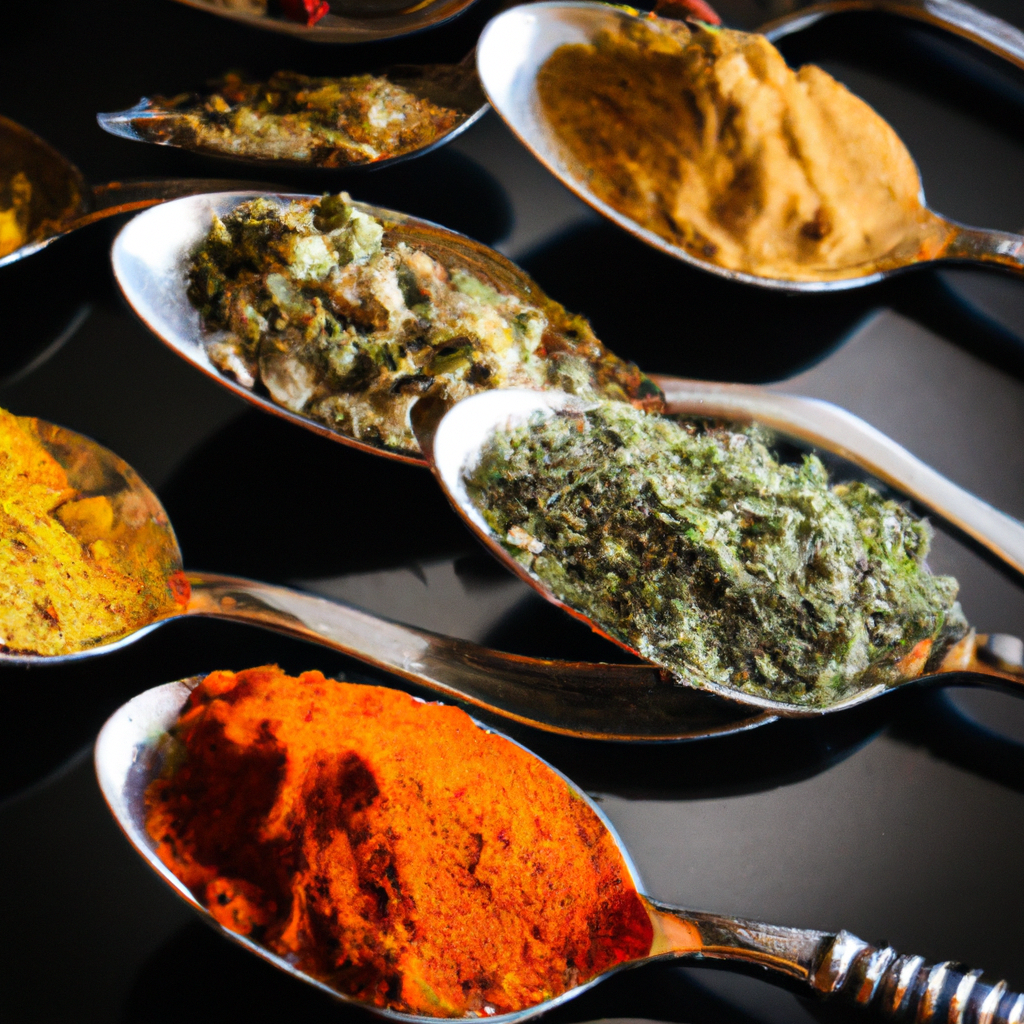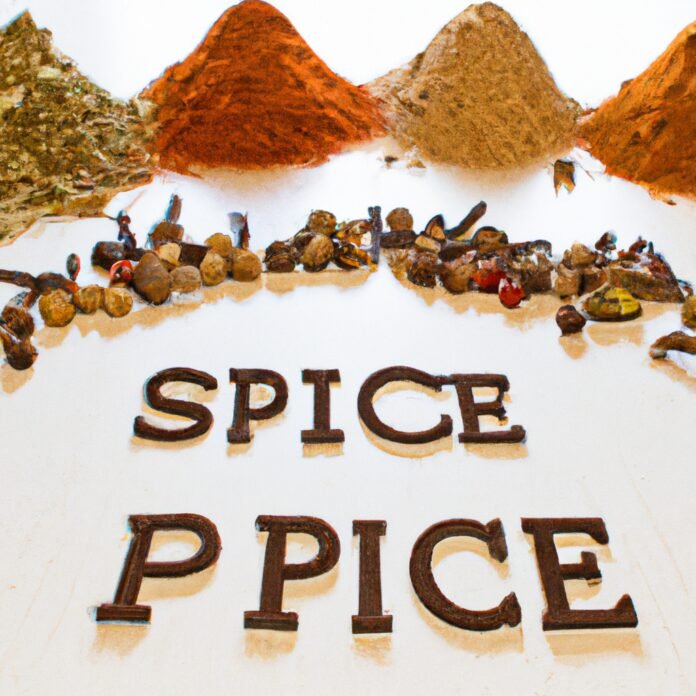Tired of dining in dull and bland? It’s time to step out of your comfort zone and add some flavor to your plate! With Spice It Up: Flavorful and Healthy Seasonings, your meal time can be transformed from boring to delicious in no time. From spices and herbs to blends and rubs, you are sure to find the perfect blend to make your meals come alive. Read on to find out how spice it up with flavorful and healthy seasonings!
1. Unlocking the World of Seasonings
Herbs & Spices
Seasonings are a magical way to add flavor and excitement to everyday cuisine. Think herbs and spices, like oregano, mint, chili powder, garlic powder, etc. There are nearly endless possibilities to choose from, which allows for fun experimentation. For anyone who loves to cook, the world of seasonings is your oyster!
Salt & Pepper
At some point, these two seasonings have been in every cook’s kitchen. Depending on the dish, you can use salt and pepper to add a mild flavor or a spicy and flavor uplift. Use them to sprinkle in small amounts, or to grind directly onto the food for a burst of flavor.
Chili Powder
Chili powder is a delicious way to add personality to your dishes with its blend of a wide variety of spices, such as cumin, oregano, garlic, and other herbs. Use it in tacos, quesadillas, burritos, and much more.
Vinegar
Vinegars come in a variety of styles and tastes, from apple cider vinegar to balsamic vinegar to white vinegar. Not only can they be used to add flavor to dishes, but also are great for homemade dressings and marinades.
Soy Sauce
Ahhh soy sauce! It has become one of the most beloved Asian-inspired seasonings, ranging from sweet to tangy and even spicy. From adding a delightful savory flavor to stir-fries to using it in marinades for meats and vegetables, soy sauce is a must-have seasoning in your pantry.
Other condiments and seasonings
Onion powder, cilantro, cayenne pepper, and paprika are some of the other options to add delicious flavor to your recipes. They have a multitude of different uses, so don’t hesitate to explore and have fun with them!
2. Spice-tastic Eating: Making Healthy Meals Exciting
Healthy eating doesn’t have to be boring – in fact, it can actually be quite exciting! All it takes is a bit of creativity and a few spices to take even the simplest of meals to the next level.
Start with the basics: use herbs to add flavor without adding sugar, salt, and fat. For example, add some freshly chopped basil to your salad, or sprinkle rosemary onto your roast chicken. Those two simple steps can make the meal go from bland to delightful!
And don’t forget about the staples of any pantry: cinnamon, ginger, cumin, and paprika. These spices are not only delicious, but are also incredibly healthy for you. Cinnamon can be used to sweeten your smoothies, add some nuttiness to your oatmeal, sprinkle some on fruits, or even use it in curries. Ginger can give extra flavor to stir-fry, soups, and baked goods. Cumin is perfect for giving a delicious smoky flavor to dishes, while paprika can add a bit of spiciness to your dishes.
Once you’re comfortable with the basics, try to experiment with unusual combinations of spices. How about some cumin, ginger, and coriander in meatballs? Or blend a mix of cinnamon, fennel, and cardamom for a sweet snack? The possibilities are endless – you just have to let your creativity run free!
Tips for Using Spices in Your Cooking:
- Always use fresh and good-quality spices for the best flavor.
- Use moderate amounts until you become familiar with a spice.
- Store spices in an airtight container away from heat or sunlight.
- Create your own custom seasonings or spice blends for easy use.
- Smell the spice before adding it to your dishes.
By adding just a few spices to your dishes, you can transform even the plainest of meals into something exciting. So why not try a bit of spice-tastic eating?
3. Find Flavor In Unconventional Ways
When it comes to flavor, sometimes a little creativity can go a long way. Here are a few tips to help find flavor in exciting and unconventional ways:
- Experiment with different cooking methods – Try to bring out the flavors of a dish in imaginative ways. For instance, steam vegetables instead of sautéing them with butter and oil – this can help highlight the vegetable’s natural taste. Or, use a slow cooker to draw out the flavor in tough, budget-friendly cuts of meat.
- Explore ethnic spices – Ethnic cuisines often feature an array of bold flavors. A warm blend of North African spices, like cumin, coriander, and turmeric, can be used to elevate a simple vegetable side. Or, add a pinch of Southeast Asian flavors, like lemongrass and ginger, to vegetarian stir-fries.
- Go for herbal infusions – Herbs are an easy and flavorful way to add flavor to a variety of dishes. Rosemary and thyme make a great addition to fried potatoes, while basil and oregano infuse pizza dough with fragrance and flavor. Chili peppers and onions infuse broths with heat and complexity.
- Think sweet-savoury – Adding a hint of sweetness in savoury dishes takes dishes to the next level. Whether it’s a splash of balsamic into sautéed mushrooms or a sprinkle of brown sugar onto brussels sprouts, a sweet addition can bring out the natural sweetness in a variety of dishes.
- Play around with flavors – Here’s where some fun experimentation can come in. Try new combinations and textures to give dishes a personal touch. Mix sweet-sour dressings with crunchy salads, or put some heat into a fragrant bowl of chili. Need some inspiration? Turn to traditional recipes from other cultures or regional cuisines.
Finding flavor doesn’t have to involve complex and costly recipes. With just a few tweaks and additions, basic ingredients can be transformed into something surprisingly delicious. Experienced home cooks know that sometimes, flavor is just a creative thought away.
4. Plant-Based Pantry: Plant-Based Seasoning Alternatives
Seasonings are a great way to bring flavor to your meals. However, when it comes to plant-based cooking, many traditional seasonings are out. Fortunately, there are plenty of great plant-based seasoning alternatives to choose from.
Spices
Spices are a great way to bring flavor and color to your meals. They are versatile and can be used to add mild or bold flavors, depending on your preference. Some of the most popular plant-based spices include turmeric, cumin, smoked paprika, garlic powder, oregano, and nutmeg. Experiment and mix spices to create your own unique flavor combinations.
Herbs
Herbs are fragrant and add a nice touch of flavor to your meals. You can use fresh or dried herbs depending on what you have available. Parsley, cilantro, mint, basil, thyme, and rosemary are just a few that can be used to liven up many different types of dishes. Make sure to chop your herbs finely and add them at the end of the cooking process.
Vegetable-based seasonings
There are also some vegetable-based seasonings that are vegan-friendly. Onion and garlic powder, garlic salt, and onion flakes are all great ways to add flavor to your dishes without the use of meat-based products. These seasonings can also be used in combination with other plant-based seasonings to create unique flavor profiles.
Sauces
- Soy sauce
- Coconut aminos
- Hot sauce
- Barbeque sauce
- Tahini
- Nutritional yeast
Sauces can be added to dishes to add flavor and depth. There are plenty of sauces that are vegan-friendly, including: soy sauce, coconut aminos, hot sauce, barbeque sauce, tahini, and nutritional yeast. They can be used to marinate, add to sauces, or just be added for a kick of flavor.
Ready to take your cooking to the next level? Incorporate some of these innovative and delicious seasonings to your next dish and spice it up! Not only will you enjoy the intense flavors, but also reap the nutritional benefits that come with them. It’s a win-win!

